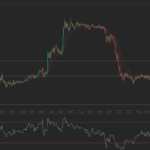 Natural gas advanced on Wednesday ahead of a government report that may show US gas inventories fell more than the five-year average in the week ended January 3rd.
Natural gas advanced on Wednesday ahead of a government report that may show US gas inventories fell more than the five-year average in the week ended January 3rd.
On the New York Mercantile Exchange, natural gas for delivery in February increased by 0.42% to $4.317 per million British thermal units by 13:15 GMT. Prices shifted in a daily range between $4.364 and $4.314 per mBtu. The energy source declined 0.4% in the last 5-day period, after losing 1.9% in the previous week. However, prices settled last year 26% higher, the best performance since 2005 and second straight annual advance.
EIA’s weekly US gas inventories report
EIA will release tomorrow a report on the US gas inventories that according to the median analysts estimates in a Bloomberg survey may show the gas inventories fell by 149 billion cubic feet in the week ended January 3rd. The five-year average withdrawal is 131 billion.
According to data by the EIA stockpiles declined by 22% in the prior seven weeks, reaching 2.974 trillion cubic feets, the lowest level since August.
Weather forecast
NatGasWeather.com reported on January 7th that temperatures will begin to warm considerably over the next few days as high pressure builds into the central and eastern US. However, several weather systems will move into the west coast and will track across the US over the coming days, providing areas of light to moderate rain and snow. By this weekend, temperatures may probably be well above normal for much of the US , significantly easing natural gas and heating demand.
A fairly strong storm is likely to develop on Friday night, leading to a wide area of moderate to heavy rains across much of the eastern US. Early next week a reinforcing shot of cold air will blast through the Midwest and into the Northeast. Several strong cold fronts will push through January 16-22nd, bringing a return to above normal natural gas and energy demand.
NatGasWeather.com’s extended forecasts show the period of milder weather conditions will give way to a new fairly cold blast around January 14th. Cold air is expected to push through the Rockies and then into the Plains and eastern US the following days. The cold outbreak won’t be as impressive as the outbreak during this week, but some chilly temperatures might be expected, which would again lead to a period of above normal natural gas and heating demand for much of the central and eastern US. Numerous reinforcing shots of cold air will track across the Midwest and Northeast with probability of fairly strong winter storms, developing over the south-central US and will then track through the Mid-Atlantic and Northeast.
According to AccuWeather.com, readings in Augusta will bottom at 5 degrees Fahrenheit on January 9th, 6 below usual, while the low in Chicago will hit 9 degrees, below the average of 18 degrees. Temperatures in Detroit are expected to fall to 20 degrees Fahrenheit, 5 below normal.
When cold weather is expected, natural gas surges as increased electricity demand to power air-conditioning calls for more supply of the fuel, which is used for a quarter of U.S. electricity generation. Above-average readings in the winter season have the opposite effect. Consumption usually picks up from November through March. According to the Energy Information Administration, power generation accounts for 32% of U.S. gas demand and 49% of U.S. households use the energy source for heating.





